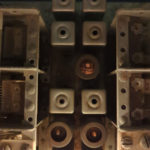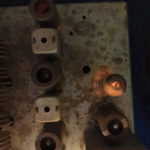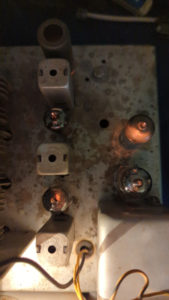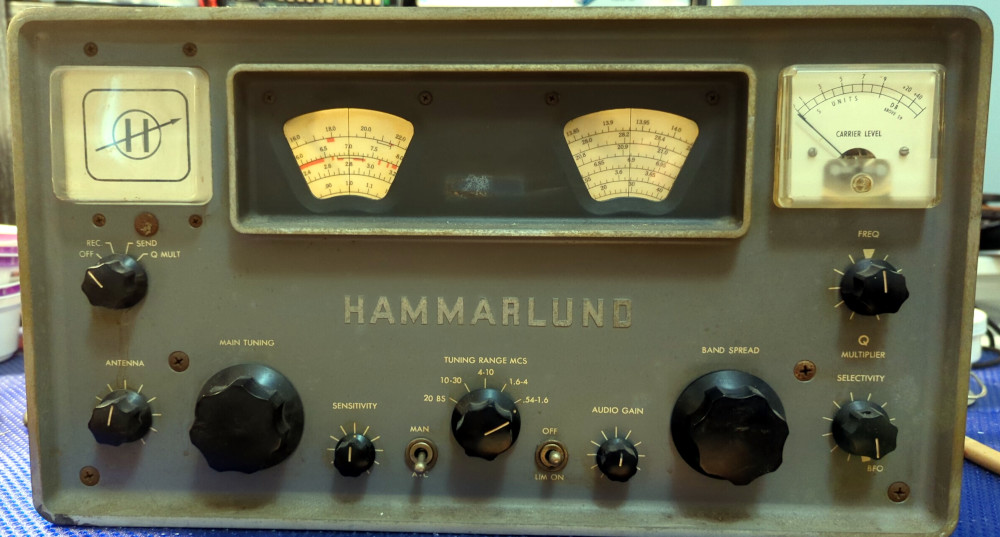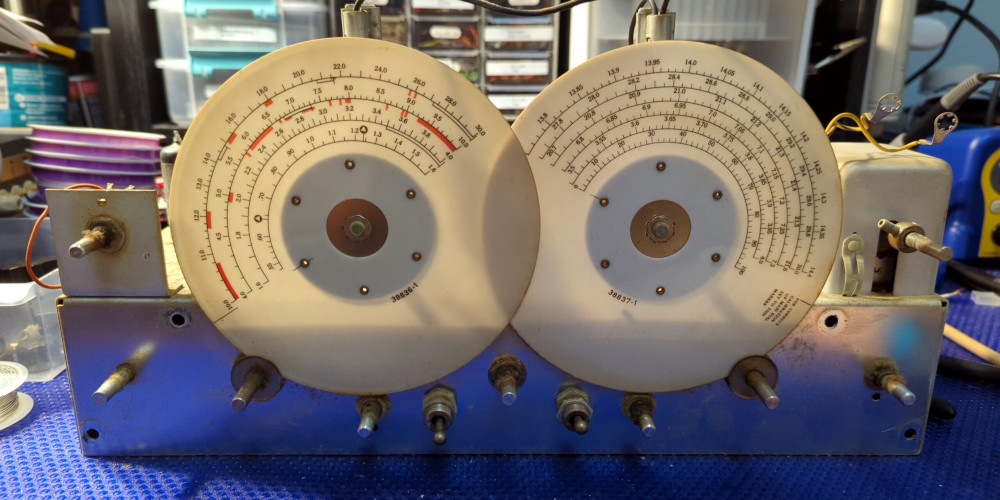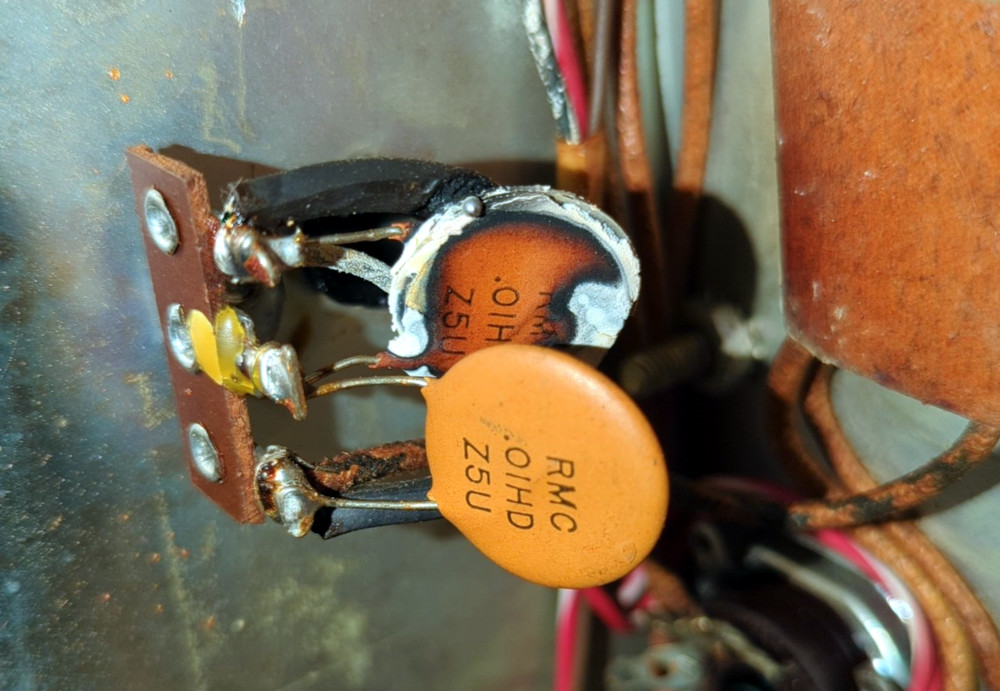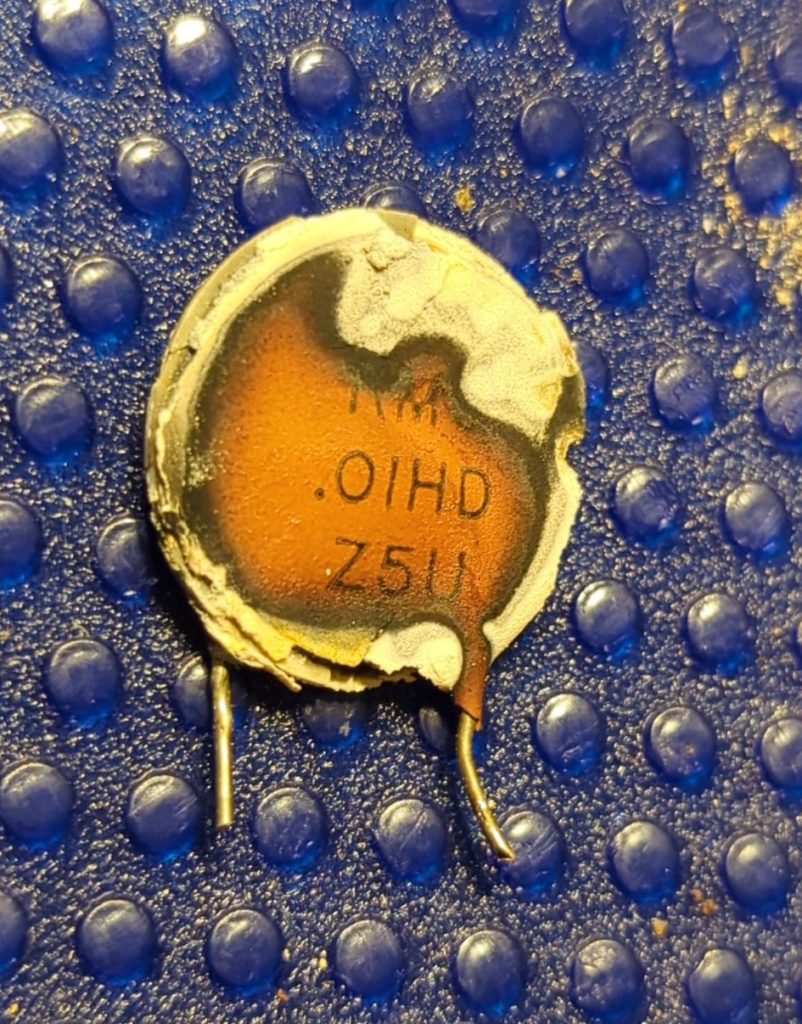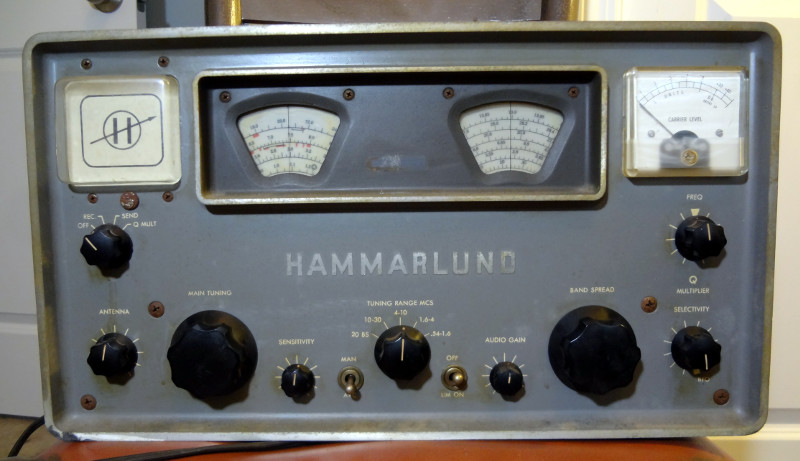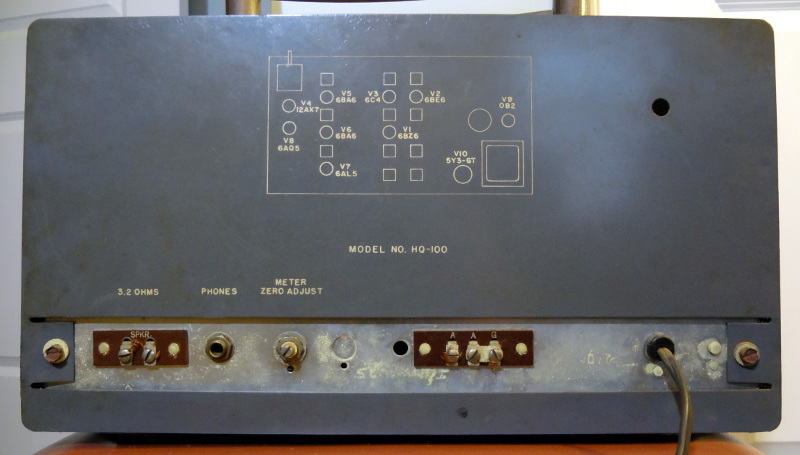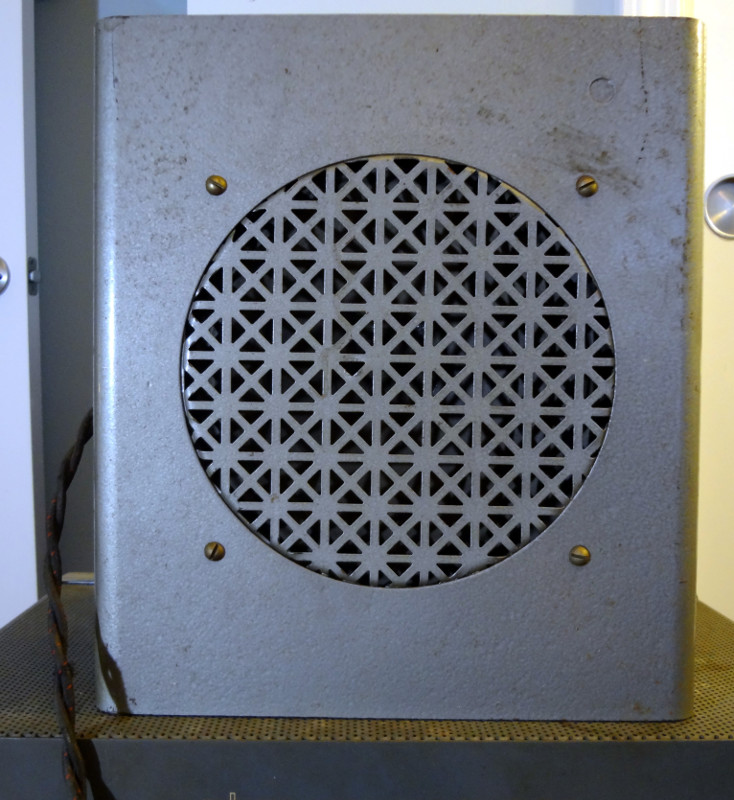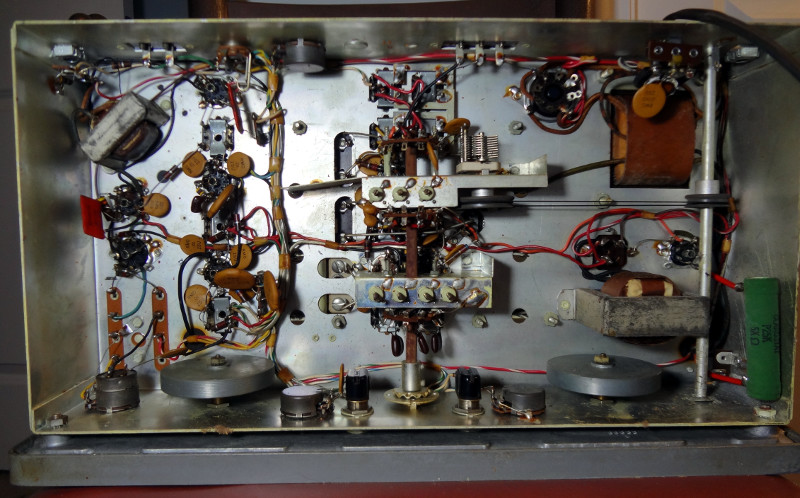The HQ-100 manual conveniently provides a table of the voltages you should be seeing at the tube pins. After replacing three of the tubes in the HQ-100, I went through and checked all the tube pin voltages and ended up replacing two more tubes (the 6BE6 and 6AL5 tubes). I didn’t have a spare 6AL5 tube on hand, but I discovered the VoltOhmyst VOM I acquired a while back also happened to use a 6AL5 tube. After pulling it out of the VoltOhmyst and putting it into the HQ-100, all the voltages at the tube pins matched the voltages in the table.
Unfortunately, I’m still not hearing any static or audio from the radio, so there’s more work to be done. The realignment procedure described in the manual calls for a 455 kHz signal source, so the next task will be to get one set up.
Update 02-Apr-2023: Since I had them on hand, I replaced the 6C4, 6BZ6, OB2, and 5Y3GT tubes. Now the only tube that hasn’t been replaced is the 6AQ5.




